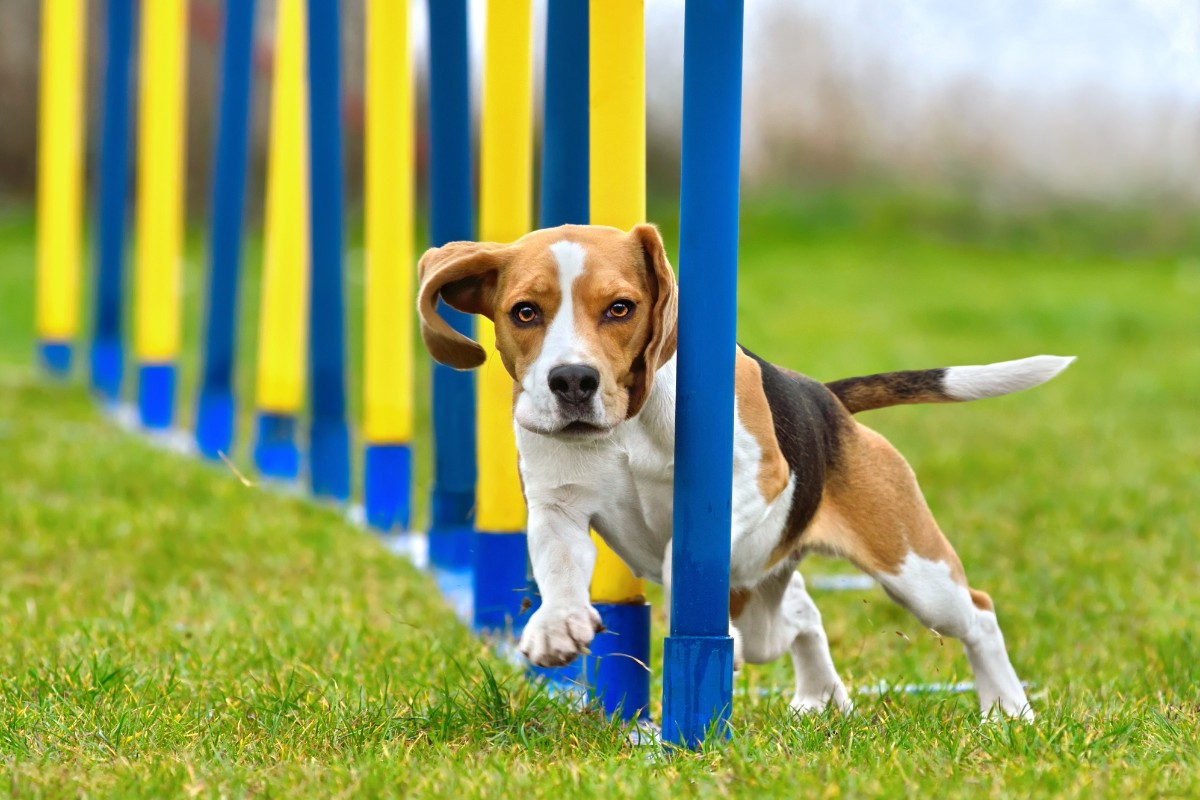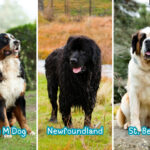 3 Nov
3 NovAre Beagles Hard To Train? (From Experience)
As a seasoned dog parent with a soft spot for these lovable hounds, I’ve spent years navigating the joys and challenges that come with training dogs. Beagles, with their distinctive howls and boundless energy, hold a special place in this journey.
If the soulful eyes have ever greeted you and merry wag of a Beagle, you’ll understand why they’re one of the most popular breeds around the globe. But when it comes to training, many potential Beagle owners find themselves pondering, “Are Beagles hard to train?”
No, Beagles are not inherently hard to train, but they do present unique challenges due to their independent nature and strong sense of smell. Successful Beagle training requires understanding these characteristics and adapting your approach.
Consistent, positive reinforcement methods work best for this intelligent breed. With patience and the right techniques, Beagles can be trained effectively to become well-behaved companions. This post promises to give you the real scoop on Beagle training. We’ll look at what sets this breed apart and offer actionable advice to help you and your Beagle become a success story.
Whether you’re a first-time dog owner or a veteran looking to add a Beagle to your pack, this article aims to equip you with the knowledge you need. So, let’s get started on unraveling the training mystery surrounding these charming canines.

Understanding Beagle Temperament
Key Traits of Beagle Behavior
Beagles are renowned for their friendly nature, curiosity, and merry disposition. These dogs are family-oriented and have enduring patience, making them excellent companions, especially for children. They exhibit a pack mentality, thriving on companionship with both humans and other dogs. However, they are also known for their strong hunting instincts, derived from their bred purpose of tracking scents. This instinctual drive to follow their noses can often lead to a noticeable streak of stubbornness and selective hearing.
How Temperament Affects Trainability
The temperament of a Beagle can greatly influence its trainability. Their eagerness to please can be a double-edged sword; while it means they are responsive to positive reinforcement, their distractibility by exciting scents can interrupt training sessions.
Understanding this aspect of Beagle behavior is crucial—acknowledging their scent-driven focus helps tailor a training regimen that can work around or even with this trait. Patience and creativity in training can turn their stubbornness into perseverance and their distractibility into keen problem-solving skills.
Comparing Beagles to Other Breeds
When we compare Beagles to other breeds, we find that while all dogs are individuals, certain breed characteristics can influence training. For instance, some working breeds like Border Collies or German Shepherds may take to training more readily due to their history of close work with humans and their high drive for tasks.
Beagles, in contrast, are scenthounds and are more independently-minded, often requiring more repetitive and consistent training efforts. They may not have the same immediate responsiveness as some breeds, but with the right approach, they can learn just as effectively. It’s important to remember that while Beagles may not always be the easiest to train, their joyful demeanor and loyalty make the training journey a rewarding experience.
The Challenges of Training Beagles
Stubbornness and Independent Nature
Beagles are often labeled as stubborn, but what underlies this trait is their strong instinctual drive and independent nature, inherited from their hunting ancestry. They were bred to follow their noses and hunt with minimal guidance, which means they have an innate self-reliance that can sometimes manifest as a lack of interest in following commands.
This independent streak requires a nuanced approach to training, where the Beagle’s confidence and intelligence are channeled properly through engaging and rewarding sessions.
Beagle’s Strong Sense of Smell and Distractibility
A Beagle’s sense of smell is one of the keenest among dog breeds, an attribute that can pose a significant challenge during training. Their olfactory prowess, capable of picking up a myriad of scents, often leads them astray during training exercises.
Distractibility can ensue when a Beagle catches an interesting scent, potentially leading to a loss of focus. Training a Beagle means learning to work with this powerful sense—using it to your advantage when possible and finding ways to regain and maintain your dog’s attention when it wanders.
The Importance of Patience and Consistency
Patience and consistency are the cornerstones of effectively training any dog, but they are especially crucial when training Beagles. Due to their aforementioned characteristics, Beagles require a trainer who is willing to repeat commands and reinforce lessons over time.
Consistent rules and routines help Beagles understand what is expected of them, providing a framework of predictability that can alleviate their stubbornness. This consistent approach, paired with patience, allows Beagles to thrive in their training and develop into obedient and well-adjusted pets.

Training Methods That Work Best With Beagles
Positive Reinforcement Techniques
Beagles respond best to training methods that involve positive reinforcement. This involves rewarding desired behaviors with treats, praise, or playtime, which not only encourages them to repeat those behaviors but also strengthens your bond with your dog. Because Beagles are food-motivated, small treats can be particularly effective. However, it’s crucial to balance treats with affection and play to prevent overfeeding. The key is immediate reinforcement, so your Beagle understands exactly what action is being rewarded.
Importance of Early Socialization and Obedience Training
Early socialization and obedience training are fundamental for a well-adjusted Beagle. Introducing your Beagle puppy to various people, dogs, environments, and situations can help prevent the development of fearful or aggressive behaviors. Obedience training, starting with basic commands like sit, stay, come, and down, lays the groundwork for a well-behaved dog. It’s important to start this training in a quiet environment where a Beagle’s attention is not constantly divided by myriad scents and distractions.
Recommendations for Training Sessions (Duration and Frequency)
When training Beagles, short and frequent training sessions are most effective. Due to their short attention spans, Beagles benefit from training sessions that last 5 to 15 minutes, spread throughout the day. Consistency is crucial, so aim to conduct these short sessions on a daily basis.
The goal is to make training a routine part of your Beagle’s day without overwhelming or boring them. Remember, ending each session on a positive note will leave your Beagle eager to engage in the next one.
Tips for Overcoming Training Challenges
Establishing Leadership and the Role of Pack Mentality
Beagles, with their pack-dog heritage, naturally look for a leader. Establishing yourself as a calm and assertive pack leader is vital in overcoming training challenges. Leadership in the training context means setting clear boundaries and rules consistently and fairly. It’s not about being harsh but about being the decision-maker in your Beagle’s life. By providing this structure, you reassure your Beagle and direct their energy positively, making them more amenable to training.
Techniques for Managing Distractions
Given a Beagle’s proclivity for distraction, especially by smells, it’s important to manage and minimize distractions during training sessions. Start in a quiet, controlled environment to establish focus. Once your Beagle has mastered a command without distractions, gradually introduce new variables, such as different locations and controlled distractions.
Use a leash during training to gently guide your Beagle’s attention back to the task when they wander off. Consistently redirecting their attention helps them learn to focus despite the distractions around them.
Strategies for Dealing with Stubborn Behaviors
Stubborn behaviors require a patient and systematic approach to training. When faced with a Beagle’s stubbornness, avoid showing frustration. Instead, take a step back and break down the training into smaller, more manageable steps. If your Beagle is not responding to a command, it may be too complex or you may be moving too fast in the training progression.
Revert to the last command they successfully followed and slowly build up from there. Always use positive reinforcement to encourage willingness and maintain their motivation. In some cases, it may be beneficial to consult with a professional dog trainer who has experience with hounds to develop more tailored strategies for your Beagle.
Frequently Asked Questions
How long does it usually take to train a Beagle?
The time it takes to train a Beagle can vary widely depending on the specific dog, the trainer’s consistency, and the complexity of the training goals. Basic obedience commands can often be learned within a few weeks of consistent training, but it’s important to remember that training is an ongoing process. Beagles may require ongoing reinforcement for months or even years to maintain their training, especially when it comes to recalling and resisting the urge to follow their noses.
Are Beagles good with kids and other pets?
Beagles are generally known for being good-natured and friendly, making them great companions for children. They are playful and sturdy enough to handle the exuberance of kids. As pack animals, they often get along well with other dogs and can learn to coexist peacefully with other pets if properly socialized from a young age. However, due to their hunting instincts, they may have a tendency to chase smaller animals, so close supervision and early introduction are key.
What are the best treats to use for Beagle training?
The best treats for Beagle training are small, low-calorie, and highly palatable. Since Beagles are scent-driven and food-motivated, treats that have a strong smell tend to grab their attention and make effective training rewards. Soft treats can be particularly useful as they can be quickly eaten, allowing for immediate reinforcement without much distraction from the training at hand. However, it’s essential to vary the type of treats to maintain their interest and prevent overfeeding.




